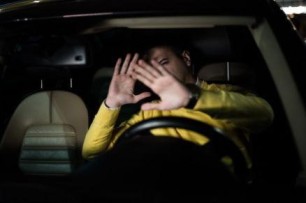Blog Details - Magma HDI

Tips to reduce high beam glare problem while driving at night 30th January 2022
Clear vision is critical for safe driving because it accounts for over 90% of our driving reaction time. Unfortunately, our eyesight changes dramatically at night, and we lose a significant amount of depth perception, colour vision, and peripheral vision. After dusk, the glare of oncoming traffic obstructs our eyesight even more.
As a result of this momentary blindness, accidents are bound to occur. Here, we bring some handy tips to reduce high beam glare problems while driving at night. However, remember that investing in a motor insurance policy is of utmost importance for all vehicle owners as it provides total protection against physical damage or loss due to natural or artificial disasters. Therefore, before stepping out, check your online motor insurance renewal and keep your documents in order.
Now, check these helpful tips to reduce high beam glare problems while driving at night.
1. Anti-glare glasses:
Examine your vision regularly. Ask your optician about no-glare corrective lenses if you wear prescription glasses. Check your glasses for scratches, which can exacerbate glare. Also, exposure to glare while day driving can hamper your vision at night. Wear polarised sunglasses throughout the day to protect your eyes and lower the possibilities of vision impairment while driving at night.
2. Spotless windshields and other glass surfaces:
During the day, a dirty windshield may not be apparent, but it might produce glare at night. Refraction of light and distorted vision on the road can occur due to the glass's streaks. Clean the inside of the windshield, as plastic compounds can accumulate on the glass over time. Remove the filth and oxidised rubber from the edge of the wiper blades with a paper towel and windshield washer fluid to help keep streaks at bay.
3. Position the car mirrors:
The placement of a car's mirrors can help control the intense glare and avoid blind spots to get an accurate judgement of vehicles approaching from both sides. Change the "night" setting on your rearview mirror with the lever on the mirror. Cars' lights will still be visible behind you, but they will be much dimmer.
4. Don't look straight, look right:
Avoid being blinded by high beams that hit you square in the face by looking down the right side of the road. Concentrate on the lane's edge or the painted edge line until the automobile passes. At hilltops, at curves, and crossroads, be mindful of oncoming vehicles' unexpected bursts of light.
5. Take a break:
If you're driving at night for an extended amount of time, take frequent stops. Taking a break relieves fatigue and allows your eyes to recover.
6. Be conscious:
Take basic precautions to avoid blinding other motorists. To begin, make careful use of your high beams. Use your low headlights most of the time and high beams only when essential. Slow down and make sure you have control of your vehicle if another driver uses high beams and fails to dim the lights as you approach.
These tips can assist in driving in the dark without being blinded by other vehicles' headlights. Shield your car with online motor insurance renewal against any such automobile accidents.
Click HERE to do your online motor insurance renewal in easy steps.
Disclaimer: The information provided above is for illustrative purposes only. To get more details, please refer to policy wordings and prospectus before purchasing a policy.

